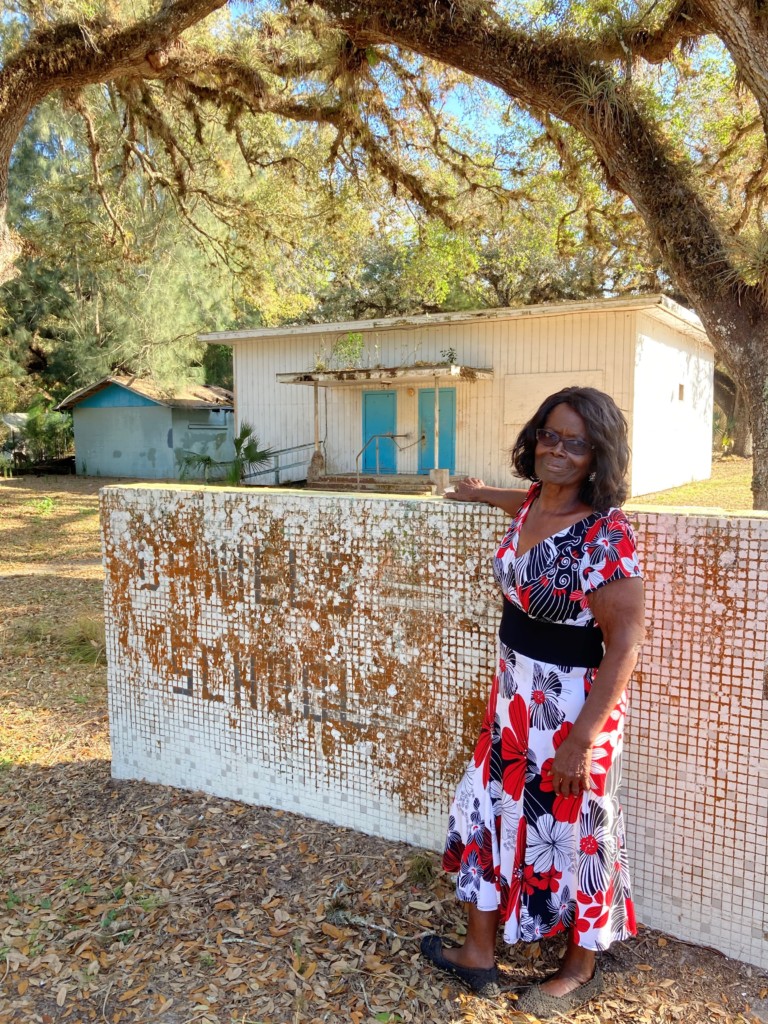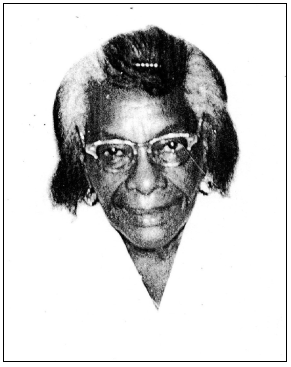
LaBELLE, Fla. – Nearly a century before micro-schools became a thing, a woman named Selma Daniels created one for Black students not far from the Everglades.
In 1930, Daniels and her husband moved from Alabama to the tiny town of LaBelle, 30 miles east of Fort Myers. There was no school in LaBelle for Black students. The closest ones were 30 minutes in one direction, 45 minutes in another – and that’s if students could get a ride. So Daniels did what pioneering educators have always done: She created her own school – in this case, in her home.
The story doesn’t end there. According to former students, local history buffs, and Brandon Jett, a history professor at Florida SouthWestern State College, the principal of the all-white public school approached Daniels when a new sawmill drew more Black residents. If you can find a place to hold classes, he said, we will pay you to teach. Daniels’s husband went to the school board. It agreed to provide a building.
The Daniels School was born.
For three decades, the Daniels School educated nearly every Black student in LaBelle from grades 1 to 6. It closed in 1966. But former students still remember the school under the oaks, the sunlight streaming through the windows, the teacher with the long, red fingernails.

If students acted up, Selma Daniels might pinch them or tug an ear. But she never raised her voice. She kissed away the pain when students got hurt. And if they struggled with a lesson, she would go over it until they got it. “You’re going to learn,” she’d tell them, putting her face close to theirs. “You’re going to have it right before you leave.”
“Selma Daniels was the best thing to happen to LaBelle,” said Dorothy Johnson, who attended Daniels School in the 1940s and 50s. “If it wasn’t for her, there would be no us.”
The story of Selma Daniels is reaching a wider audience thanks to Johnson and Jett. A few years ago, Johnson convinced the city council to re-name the road that runs past the school to Selma Daniels Avenue. Jett, meanwhile, has surfaced tantalizing details about Daniels’s remarkable life, and deftly persuaded local media to shine a spotlight.
“I didn’t have much work to do to make this story fantastic,” Jett said. “It’s struggle. It’s perseverance. There was a need and a vacuum. (Selma Daniels) saw that, and filled it, and by all accounts filled it successfully.”
The old school still sits in the same working-class, Black neighborhood, ringed by churches and, at this time of year, awash in the smell of orange blossoms. There is talk of restoring the building, perhaps for a museum. There is also fundraising for a Selma Daniels Scholarship Fund, which will pay college tuition for a local student who wants to become a teacher.
It’s sweet timing that Selma Daniels is getting attention now.
As the landscape of public education changes to yield more and more options, more and more teachers are finding they have the power to create them. Examples in Florida abound. (For starters, see here, here, here, here, here.)
In a way, these teachers are going back to the future. Because there have always been teachers who saw a need and found a way.
In 1904, Mary McLeod Bethune created a private school for Black students in Daytona. To keep it running in the early years, she biked around town to solicit donations and helped students bake sweet potato pies for fundraisers.
In the 1970s, Marva Collins left Chicago public schools to create a private school, initially in her home. The achievement results were so outstanding, Collins inspired a TV movie starring Cicely Tyson.
Between 1917 and 1932, Black communities throughout the South helped build 5,000 Rosenwald schools. Philanthropist Julius Rosenwald offered the seed money, but Black communities often raised the bulk of the funds and secured the land. Officially, the partnership stipulated the schools fell under the jurisdiction of white school boards. But unofficially, Black residents often exercised power over hiring and curriculum.
The ironic result: All-Black schools, separate and unequal, and yet, beloved.
The Daniels School started with about 20 students and grew to about 60. At some point, a partition was built so the one-room school could have two classrooms. A few years before integration, students settled into a three-classroom school a block away.
The school was never just a school. Daniels arranged for the dentist to visit. She checked on students at their homes. She took them for picnics on the banks of the Caloosahatchee River, and to the zoo in Sarasota via the train in Fort Myers.
“I called her a pioneer lady,” said alum Brutus Ned, “because she did everything.”
Daniels taught all subjects in all grades until a car wreck in the 1950s left her with medical complications. Even then, she remained active in the community and continued to be a frequent presence at the school.
Its closing in 1966 upset the Black community in LaBelle, just as similar closings upset Black communities around the country. Black teachers lost jobs. Black students felt isolated. The joy they experienced at Daniels School did not follow them to their new schools.
The integrated schools “never had the same feeling,” Johnson said. “The love was missing.”
If Selma Daniels was alive today, she’d have multiple options to create a Daniels School with more resources and more freedom. Students could get state-supported scholarships to attend a private Daniels School. And the day is coming when more flexible scholarships will allow students to access schools in non-traditional settings, like rec centers or churches.
It’s not clear yet if the Daniels School building can be restored. And, if it can be, what will become of it.
Johnson just wants Selma Daniels to get the recognition she is due.
But a new Daniels School, she said, sure has a nice ring to it.



[…] This article originally appeared on reimaginED. […]